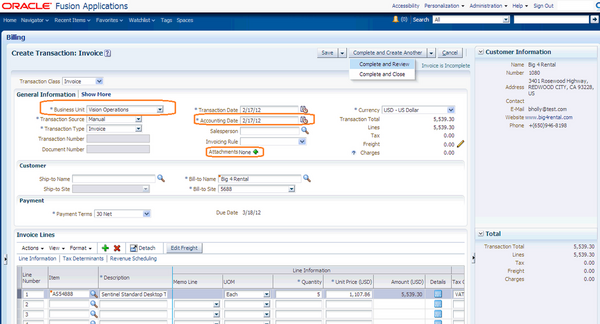Oracle Fusion Receivables

Oracle Fusion Receivables provides most of the functionalities available in Oracle EBS 11i/R12. All the mandatory setups are also similiar to the setups available in 11i/R12.
OFR allows you to perform most of your day-to-day accounts receivable operations. Receivables lets you manage customer billing activities, process customer payments, manage accounts receivable balances, and perform tasks that are related to revenue recognition and revenue adjustments.
Transactions

Similar to 11i & R12, You can create below transactions in fusion receivables
• Invoices and Debit Memos
• Credit Memos
• On-Account Credit Memos
• Chargebacks
• Adjustments
All the new fields in fusion application transaction form are outlined in the above pic.
Business unit: Similar to operating unit in 11/R12
Accounting Date: GL date in 11i
Attachment Note
Question : Where is the legal entity information ?
Click on more and navigate to miscellaneous tab to verify the other details

The RA_CUSTOMER_TRX table stores invoice, debit memo and credit memo header information. Each of these transactions is stored as a unique record, based on the primary key customer_trx_id. The transaction number, transaction date and billing customer are stored in the trx_number, trx_date and bill_to_customer_id columns respectively.
The RA_CUSTOMER_TRX_LINES table stores invoice, debit memo and credit memo line level information. Each transaction line is stored as a unique record, based on the primary key customer_trx_line_id column. The customer_trx_id column is a foreign key to the RA_CUSTOMER_TRX table.
The AR_PAYMENT_SCHEDULES table stores customer balance information at the transaction level. Each transaction balance is stored as a unique record, based on the primary key payment_schedule_id. The class column identifies the transaction type and determines which columns Receivables updates when a transaction is stored.


